Travelling within the city was not a problem in Pest for a long time, as its size did not require special means of transport. However, there were settlements around the city that were organically connected to Pest (and now parts of Budapest), but they were not so close that they could be conveniently reached without means of transport.
It is no coincidence that Hungary's first horse-drawn railway led from Kerepesi Road to Kőbánya: they wanted to transport the products of the mines here to Pest, to the construction sites. However, the special monorail, which opened in 1827, failed, and in 1828, the track was demolished.
In cities, steam-powered vehicles were not successful or widespread. In Buda, the funicular and cogwheel were steam-powered, and on some suburban lines, steam locomotive traction operated for a short time, but in the cities, until the end of the 19th century, horse-drawn means of transport were dominant.
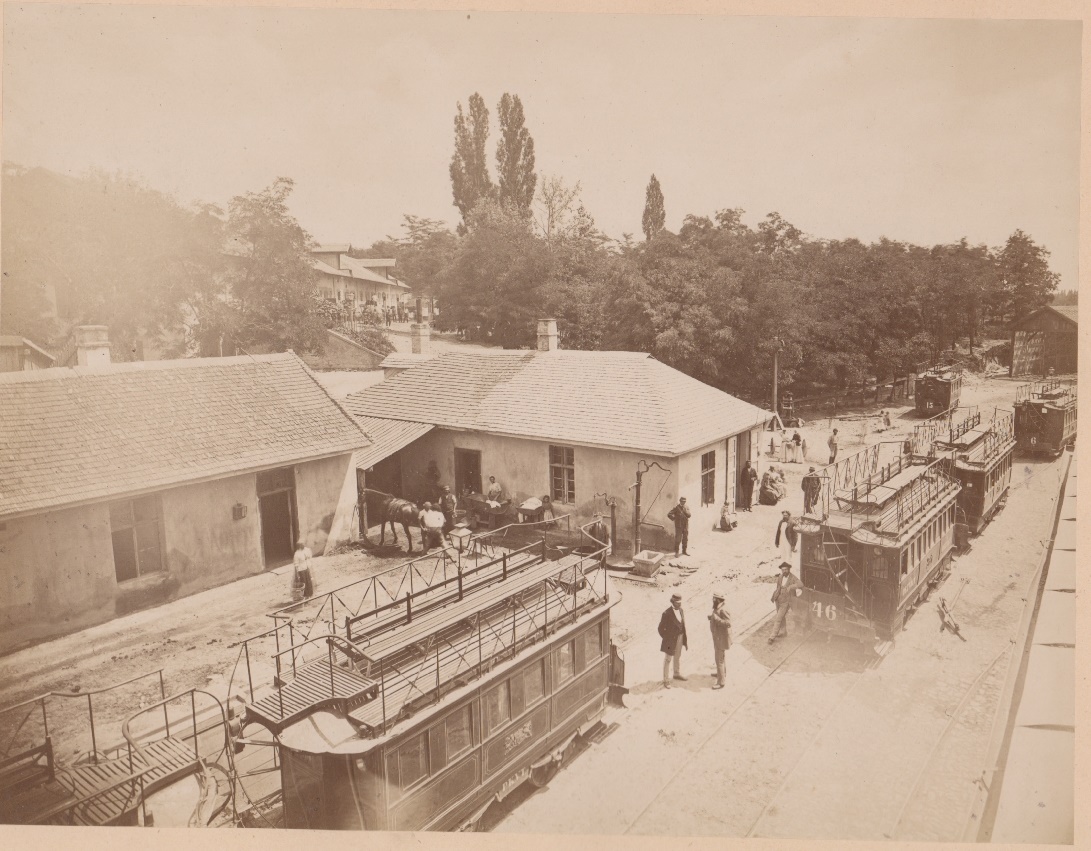
György Klösz's photo at the Újpest Horse-drawn Railway Station (Source: Hungarian Museum of Science, Technology and Transport, No.: TFGY 11078)
The initiator of the first Pest horse-drawn railway was Count Sándor Károlyi, who applied for a permit to build a horse-drawn railway line from Pest to Újpest already in 1863, and in 1865, he received it. The Károlyi family had large estates in Újpest, and Sándor's father was already committed to the development of the district. Although the village was connected to Pest by an omnibus from 1844, it was only able to carry a small number of passengers, 14 people at a time.
In possession of the building permit, under the chairmanship of Károlyi, the Pest Road Railway Company (Pesti Közúti Vaspálya Társaság - PKVT) was established and the construction of the track began. The works were completed in the summer of 1866, and on 30 July 1866, at 4 p.m., they could hold the grand opening. However, traffic on the railway did not begin until 1 August 1866.
The paper Magyarország és a Nagyvilág wrote about the grand opening on 5 August 1866:
“You can imagine that there was a lot of interest from the public and enthusiasm when the five cars, with several members of the city authority - in front, the deputy mayor - many noblewomen, beautiful girls, shareholders, citizens and a whole car with journalists - started. The cheerful starter roared from the instruments of the folk musicians placed in one of the cars, and the other cars also had constant cheerfulness and good humour, while after the thirty-six minutes of travel, the train arrived in Uj-Pest.”
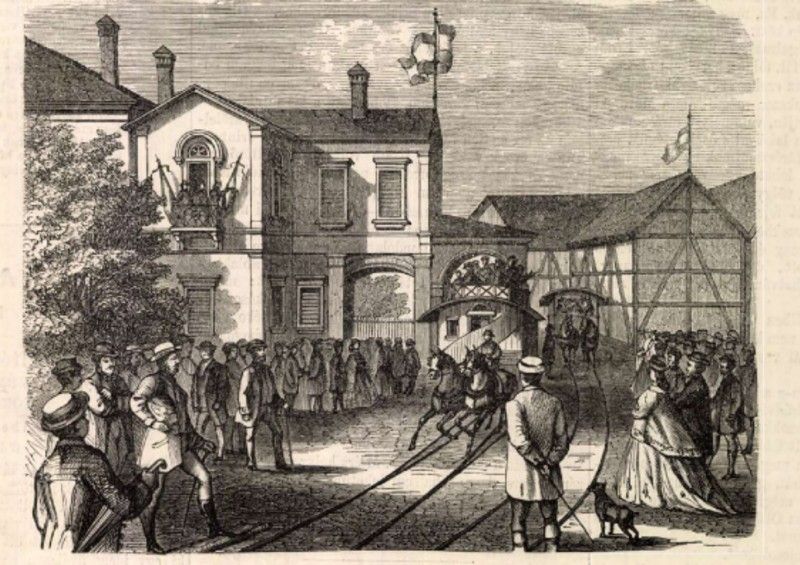
A crowd celebrating in Újpest was waiting for the first Hungarian horse-drawn railway on 30 July 1866 (Source: Magyarország és a Nagyvilág, 5 August 1866).
In the report, it was emphasised that on the horse-drawn railway the "inscriptions, the clothes of the service staff are all Hungarian, the carters wear a blue corded grey attila, and the conductors wear a dark blue." For safety, there was a beep on the carriage while driving so that pedestrians would not have an accident on the rails.
There were two types of carriages on the track, the open, canvas-covered vehicles travelled from Széna (today's Kálvin) Square in Pest to the railway station, i.e., today's Nyugati Railway Station, while the closed cars travelled to Újpest, the journey time was 35-37 minutes.
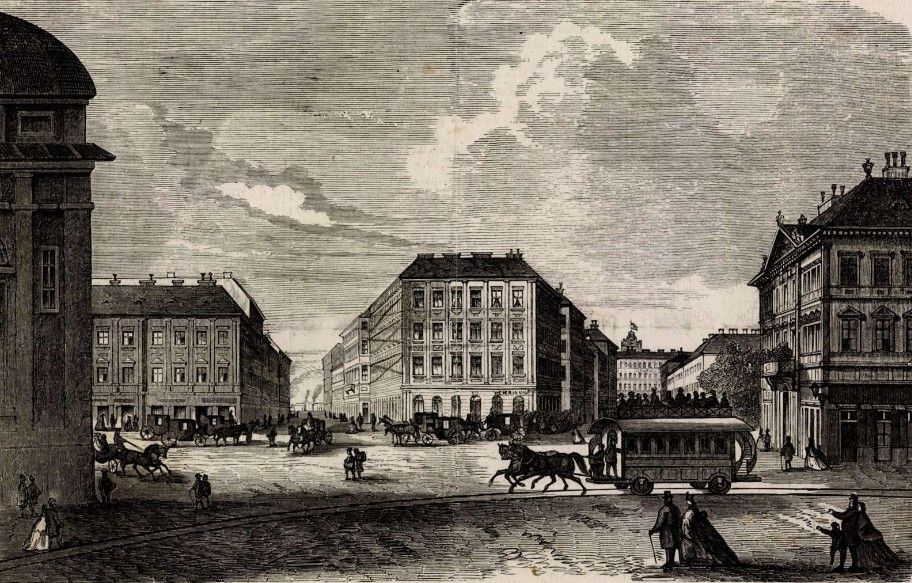
The track of the horse-drawn railway in Deák Square (Source: Magyarország és a Nagyvilág, 5 August 1866)
After the opening, on 12 August 1866, the Vasárnapi Ujság wrote:
“(The Pest-Újpest horse-drawn railway), or rather: the road railway still enjoys very large popularity among the inhabitants of the capital. Everyone is in a hurry to tempt this new trip at least once, and it is written that since the opening, the box office has got 200 HUF a day from the many 10-15 krajcár fares. This high frequency will probably fall short later, but otherwise, everything shows that this new mode of transport is also slowly creating an audience, just as local steamers and bulky omnibuses have had to create.”
There were bugs the first time, the carriage derailed several times, which was more of an inconvenience. The Vasárnapi Ujság article quoted above also noted that it takes time for major or minor errors to be corrected and for carters to learn how to handle new vehicles.
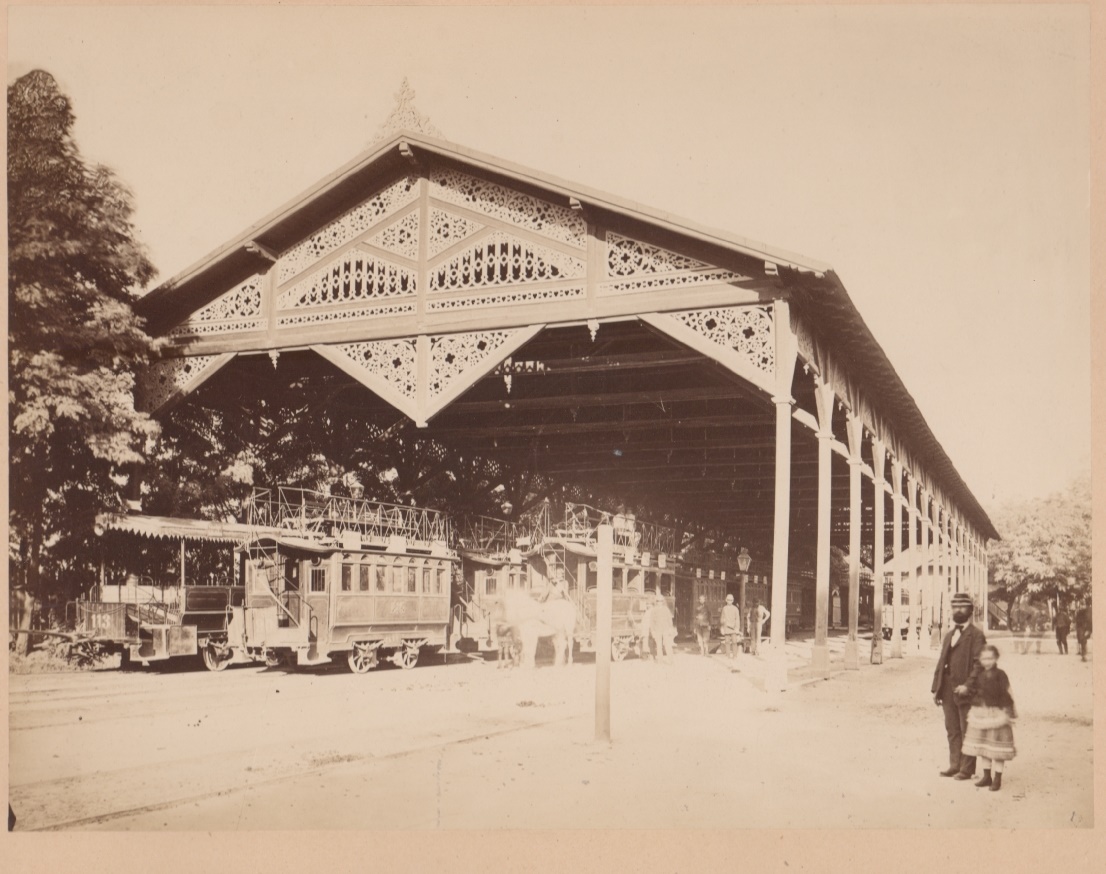
The railway station of the Pest Road Railway Company in the photo of György Klösz (Photo: Hungarian Museum of Science, Technology and Transport, No.: TFGY 11077)
Horse-drawn carriages could carry up to 30-40 people at a time, compared to the 14-person capacity of omnibuses. The trip was not very cheap, you had to pay 20 krajcár for a ticket in the first class and 10 krajcár for the third class, and factory workers could buy a ticket at 25 per cent discount. The horse-drawn carriage was decisive in the development of Újpest, as it was possible to quickly reach the growing number of factories settling here from Pest. The line of Újpest was extended in 1867 to the northern border of Újpest, then in 1872 to Rákospalota.
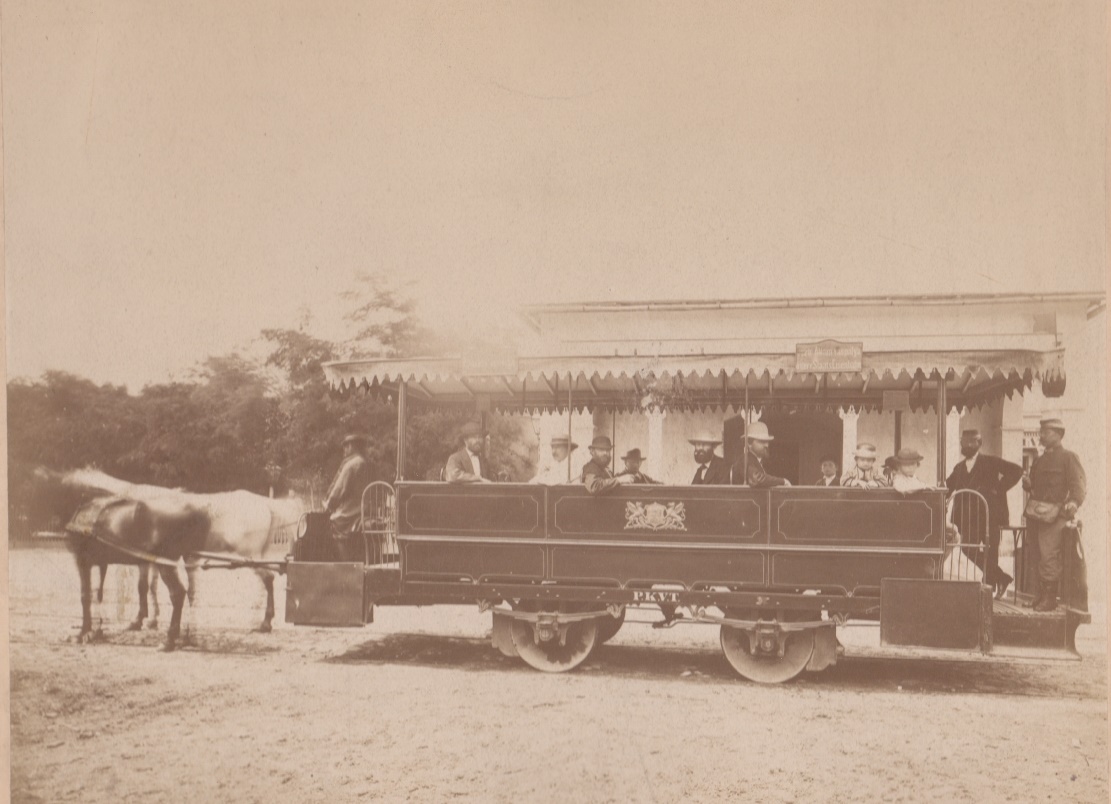
Open horse-drawn carriage from the 1870s (Source: Hungarian Museum of Science, Technology and Transport, No.: TFGY 11166)
The line leading to Újpest was only the first swallow: Pest and Buda were incredibly quickly enmeshed by horse-drawn railways, and the two shores were connected in 1879 via the Margit Bridge. The network reached its largest extent in 1889 when 350 carriages were travelling on 45.8 kilometres, and 1,200 horses were needed to service them.
At the end of the 19th century, the horse-drawn carriage was practically displaced by the tram in one fell swoop. In Budapest, the former horse-drawn railway tracks were converted to electric operation in the 1890s, and trams have been operating on the Újpest line since 1896.
The horse-drawn railway remained in one line: it was possible to travel on Margit Island until 1928 with this vehicle. The omnibus, also towed by a horse, lived on for a year longer, the last omnibus in Budapest ran on today's Villányi Road until 5 November 1929.
Cover photo: The horse-drawn carriage of the Pest Road Railway Company in the 1870s (Source: Hungarian Museum of Science, Technology and Transport, No.: TFGY 11165)

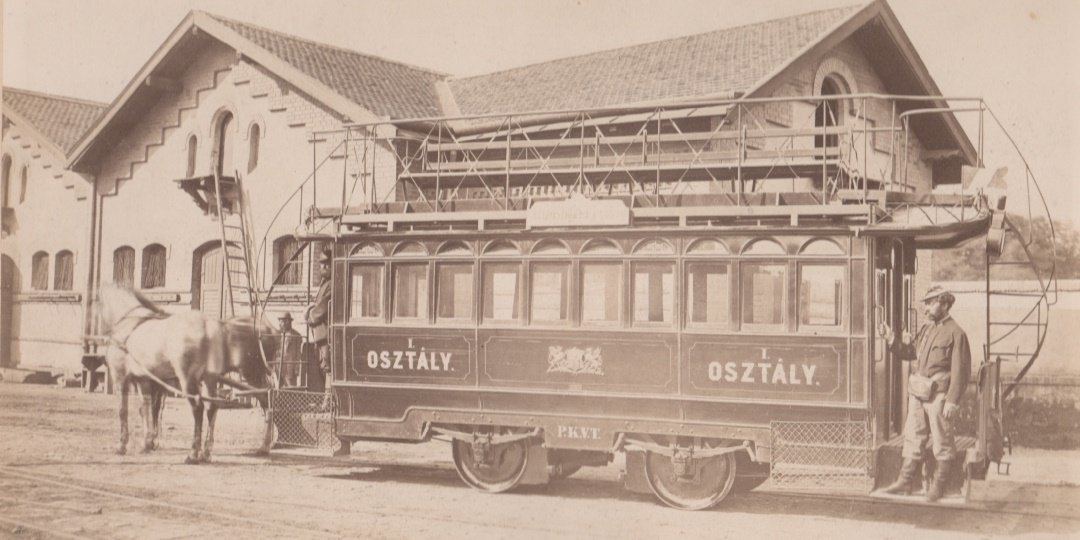


































Hozzászólások
Log in or register to comment!
Login Registration